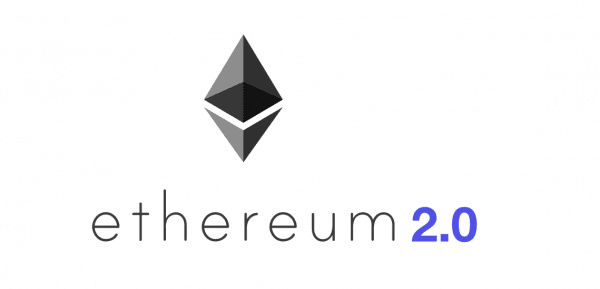Big movie theaters will time their release of summertime blockbusters to coincide with movies they think they can beat at the box office. That way we have a week of Avengers squaring off against Justice League, and the winner take the spoils. Ethereum-creator Vitalik Buterin apparently is taking a similar course by releasing Ethereum 2.0, as we have two major changes (the other being the Bitcoin halving) in the world of cryptocurrency happening bunched close together.
Naturally, there’s been some incredulous folks on twitter curious about how this is going to be an improvement, especially on Bitcoin from 2009. To them, Vitalik Buterin, the mastermind behind Ethereum and Ethereum 2.0 said:
1. Sharding and ZKPs ensure verification cost much cheaper than personally re-computing every tx
2. PoS and not PoW
3. Stateless verification
4. Supports arbitrary smart contracts (like eth today)
5. Supports strong privacy at L2
6. 12s block time, each block equiv to many confs— vitalik.eth (@VitalikButerin) March 18, 2020
Then last Friday, the development team successfully mined and validated the first block on a testnet.
The first set of stress-tests have been successfully implemented by third-party security auditing firm Least Authority, which despite some technical hiccoughs from not having any comparable sharding companies, gave the blockchain upgrade a passing grade.
“Since no other large-scale implementations of a PoS system currently exist in production, auditing the Ethereum 2.0 Specifications presented our team with certain challenges and made this review particularly interesting,” reads the report.
Now Ethereum 2.0 will launch in six staggered phases, and now after a few false starts, phase 0 kicks off in July, giving developers a few months to put the finishing touches on the code.
Now let’s dissect what that all means.
Ethereum to scale
Ethereum 2.0’s biggest change is its switch from a Proof-of-Work (PoW) consensus protocol to Proof-of-Stake (PoS). This has been coming for awhile—at least for as long as I’ve been paying attention to the cryptocurrency world—and shouldn’t come as much of a surprise to anyone deeply involved. But what is particularly new about this shift is that ETH 2.0 will be the first PoS network to use sharding.
That means no more GPU’s or ASIC-rigs required, and no large scale electricity expenditure. Only pre-existing coins staked for the opportunity to close the block and get the block reward. We’ll get into what this all means more later when we discuss how this effects users and companies involved.
First, we should explain something.
In Ethereum 1.0, all the nodes on the blockchain work together to create consensus. That limits Ethereum’s transaction amount to between 10-30 transactions a second, whereas Visa’s network 24,000 per second.
The Ethereum network, like many blockchain networks works by having several nodes working to help verify transactions.
It does this in two ways:
- Nodes need to possess a full copy of the blockchain to be able to check previous versions to ensure transactions are accurate.
- Once they’ve done that, nodes check with other nodes to ensure their copy of the blockchain is the right one.
Sharding is supposed to solve the above problem.
Sharding will break nodes up into groups called, well, shards. Inside of each shard, nodes will contain and verify the transaction history of the shard that it’s inside. So instead of the entire network requiring to come to consensus to verify transactions, it’s possible to create an infinite amount of shards to process transactions on a smaller scale. This allows the whole network to potentially scale limitlessly.
Inside each shards are different types of nodes called Collators, which are responsible for collecting descriptions of each transaction inside the shard and recording the state of what’s happening. Once the collators have completed that, they pass that information onto Super Nodes.
We can think of these super nodes as collections of pre-verified data, which they then compare with other supernodes. So instead of every node carrying the same amount of responsibility for verification of the blockchain, this responsibility is reduced to a few nodes, and the transaction times are reduced.
How does this effect holders and companies?
The shift from PoW to PoS necessarily means that companies like Hive Blockchain Technologies (HIVE.V) that already have working proof-of-work operations using GPU chipsets can repurpose those chipsets for different coins, effectively diversifying their coin portfolio, while staking their existing ethereum coins to place a bid to get more. That way they can slash their electricity prices even further, and potentially divert the electricity they save towards bitcoin or other SHA-related coin mining operations.
If we’re considering who the biggest winners and losers are in this group, we can’t really point to the small scale GPU miners. As more companies moved to ASIC mining for ethereum, they had been priced out of the market for mining ethereum (and other coins) anyway, and this change may actually produce an avenue for them to get back into the ethereum mining market depending on the size of their stake.
Beyond mining and coin-acquisition, the number of people and firms engaging in smart contracts on the network reached 1,971,632 in March, which is an all-time high and marked a 75% increase over the previous month. Online analytics platform, Dune Analytics recorded the number of contracts on the network over the last 12 months, and the average only registered at 670,000 per month.
It’s noteworthy to point out that this peak has coincided with the cost of dealing with Ethereum is at one of its lowest points, with developers doling out an average of $11,600. This suggests that adoption is definitely rising, and there’s strong support for the coming upgrade to 2.0. Also noteworthy is that while the number of smart contracts has increased, there has no noticeable increase in the number of transactions, suggesting that contracts are being formed and those responsible are positioning themselves for when the ETH2.0 changeover comes completely operational.
—Joseph Morton

